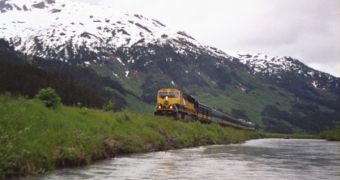A new survey of a 64-kilometer (40-mile) stretch of the Beaufort Sea, in Alaska, shows that soil erosion has nearly doubled in speed and intensity over the past five years, between 2002 and 2007. This discovery has numerous important implications, including the destruction of the natural habitat of the animals and the loss of invaluable cultural relics, which are buried in abundance in some places. The average rates of coastal erosion recorded since the 1950s have left little room for interpretations, and paint a bleak picture of what's going on in the northern part of the peninsula.
Scientists have identified a number of factors that may have caused such a rapid increase in soil erosion. Among them, the most important is the diminishing of the northern ice sheet and its consequences. Basically, less ice means more warmer water, which in turn translates into more severe storms in the area. More precipitations and higher waves now have the potential to rip off some 14 meters (45 feet) of coastline each year, as opposed to the 6.1 meters (20 feet) recorded in the mid 1950s.
“These factors may be leading to a new era in ocean-land interactions that seem to be repositioning and reshaping the Arctic coastline,” geologist Benjamin Jones, from the US Geological Survey in Anchorage, cautions. Along with his colleagues, the scientist has reported his finds in the February 14th issue of the journal Geophysical Research Letters, published by the American Geophysical Union (AGU).
“This segment of coastline has historically eroded at some of the highest rates in the circum-Arctic, so the changes occurring on this open-ocean coast might not be occurring in other Arctic coastal settings,” he adds, while noting that the area has already been eroded by more than 24 meters (80 feet) in 2007 alone.
“The recent trends toward warming sea-surface temperatures and rising sea-level may act to weaken the permafrost-dominated coastline by helping more quickly thaw ice-rich coastal bluffs and may potentially explain the disproportionate increase in erosion along ice-rich coastal bluffs relative to ice-poor coastal bluffs that we documented in our study,” the study goes on to say.
“Any increases in already rapid rates of coastal retreat will have further ramifications on Arctic landscapes – including losses in freshwater and terrestrial wildlife habitats, in subsistence grounds for local communities, and in disappearing cultural sites, as well as adversely impacting coastal villages and towns. In addition, oil test wells are threatened,” the paper concludes.

 14 DAY TRIAL //
14 DAY TRIAL //